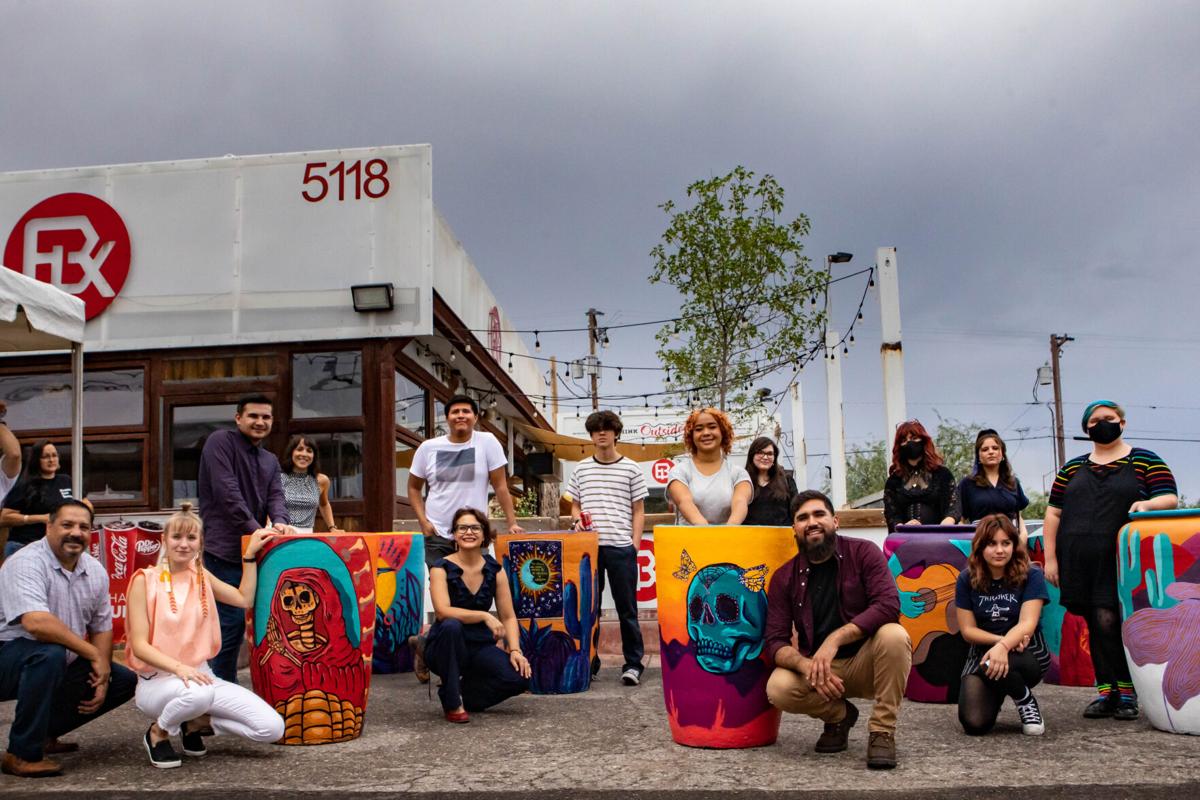We're kicking off December with 12 Days of Nonprofits — a 12-day celebration of the many local organizations that provide needed services to our community.
According to national labor statistics, Tucson is home to an estimated 4,000 employees of the arts, designs and entertainment fields.
But Adriana Gallego, executive director for the Arts Foundation for Tucson and Southern Arizona, estimates there are thousands more creatives living in the area.
The nonprofit foundation, which started as a loose collective in 1971, plays an important role for many of those creatives.
The organization provides funding and professional development for artists and art organizations, manages the city and county public arts programs, and helps the arts become more equitable and accessible overall.
“At the end of the day, it’s really about ensuring that we are caring for the creative people who, at the heart of it, are bringing our dreams, our stories and our histories to life,” Gallego says.
“We invest in creative thinkers,” Gallego says. “And if we invest in creative thinkers, we’ll never be at a loss for solutions.”

Executive director Adriana Gallego speaks at a Transportation Art By Youth unveiling event in July.
Assistance for artists from the Arts Foundation comes in many forms, including monetary grants.
With the help of private funding and funding from the city, county, state and federal level, Gallego says the Arts Foundation was able to distribute more than $2.2 million to artists and arts organizations over the last year — a time that she says was one of “urgency and need during the pandemic.”
That $2 million — which is far more than a typical year for the foundation — included more than 500 grants to individual artists and arts organizations.
“For us, it’s important to not stop the investment at the transactional level,” Gallego says, adding that the foundation tries to “stretch the relationship” with artists in ways such as consultations, one-on-one conversations, research and guidance, and marketing opportunities.
“All of my colleagues have some kind of artistic practice and the beauty of it is they come into their service through this work, knowing what it’s like to be an artist, having worked in the gig economy and understanding all the different roles an artist has to wear to have a successful career trajectory,” Gallego says.

Pictured is artist Rickey Bush live painting at a recent Open Studios Tour mixer with the Arts Foundation.
The Arts Foundation also tries to make their work as accessible as possible. As an example, artists can learn about grants through an email newsletter, social media, or the Arts Foundation’s website.
But for artists who may not have the best internet connection, Gallego says they can call the foundation to submit their information for a grant by phone instead.
“There’s nothing even in the makeup of our bodies that is the same. It’s because of those differences that our bodies are such a miracle,” Gallego says. “Personally, I take that very seriously in terms of how we then reach out to our communities to ensure that everyone has access to the same resources and that we can lift any barriers to access those resources.”
Gallego says her team does everything from driving to different communities and hanging up flyers and introducing themselves; cold-calling people and establishing relationships; bringing in consultants who are able to help with outreach; and working with a diversity committee of community members.
“We’re really trying to be diverse, inclusive and equitable across generations, across genders, across cultures, across political boundaries, geographies,” Gallego says. “I really feel that arts and culture is the antidote to so much.”
“We really try to make this as accessible as possible and let our communities tell us what they need because we don’t want this to be a top-down situation,” she says. “We really want to hear from folks because artists on the ground are the ones that know what they and the community need.”
The Arts Foundation also manages the city and county’s public arts programs through a project dubbed Percent for Art. Through the initiative, when there are capital improvement projects — often transportation projects — with budgets over $100,000, 1% of the budget goes toward public art in some form.
Percent for Art has led to more than 300 public art projects across Tucson and Pima County since 1986, according to the foundation's website.
How to help
Anyone interested in donating to the Arts Foundation can do so through the organization’s website. Gallego also encourages the community to keep advocating for arts and culture.
But her No. 1 mantra? Always pay artists fair wages.







